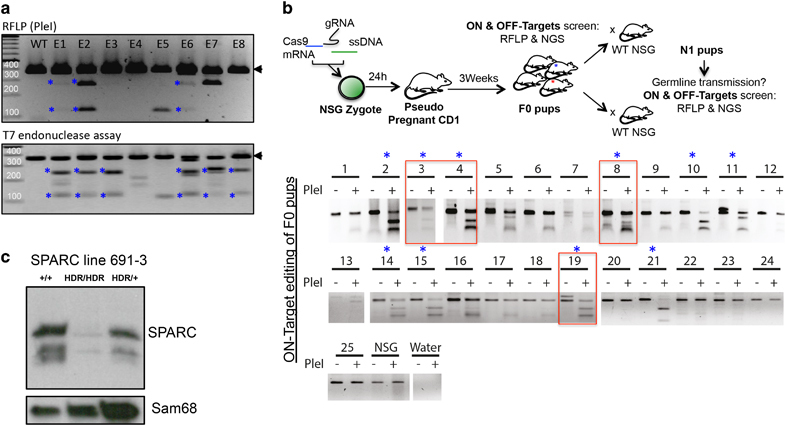Figure 1.

CRISPR/Cas9 allows for the fast and efficient generation of SPARC deficient NSG mice. (a) RFLP (PleI digest) and T7 endonuclease analysis of day 4 NSG embryos microinjected with gRNA#1, Cas9 and ssDNA template. Asterisks mark productively edited embryos. (b) Schematic view of the workflow to generate NSG-edited line (top) and RFLP analysis of tail DNA from chimeric F0 mice (bottom). Asterisks mark HDR-edited mice. A subset of F0 mice (red squares) were backcrossed to WT NSG mice to obtain N1 progeny and evaluate germline transmission of the HDR+ allele. (c) Western blot on bone marrow cells shows complete loss of SPARC protein in SPARCHDR/HDR animals, whereas a significant reduction is also observed in heterozygous SPARCHDR/+ mice. Sam68 is used as loading control.
